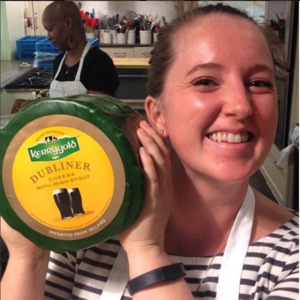Somewhere in the transition to retirement, my parents thought it would be a fine idea to install a wood-burning oven in our yard.

At first, I was shocked, excited, and confused. My parents are avid home chefs, but this is an expensive commitment. One not only of money and space, but of maintenance. And then you’ve got to use the dang thing.
Well, use it they do. They cook bread, pizza, roasts, and whole meals in this sucker. It’s huge, and it has the space to cook few pizzas at a time, a whole turkey in a roasting pan, or sometimes, a whole meal.

The exciting (and tricky) thing about cooking in a wood-burning oven is that it gets insanely hot. Like 1,000 degrees hot. The process takes all day to get to that temperature, which means this isn’t an impulse situation. My dad starts the fire in the morning and gets it super hot, and then allows time for the oven to cool so you don’t totally char everything. Cooking something like a turkey still takes some time, but making a pizza can happen quite quickly, so that means you have to be alert and ready to take it out as soon as the crust starts to crisp up.
When I was home for Christmas, I photographed our “big” family meal. It was a whole roast turkey and a variety of roasted root and winter vegetables. I was in charge of making gravy once the turkey was ready, so don’t worry, I was still put to work.

Perhaps the complete opposite of cooking with an extremely hot fire is cooking “low and slow” with smoke. Many years prior to the building of the outdoor oven, my dad got a smoker for some holiday (lolz my family likes cooking gear, ok?), and honestly it’s been the best thing ever.
Dad has since become famous for his smoked foods, namely his pulled pork. A few days after we roasted the turkey in the oven, I was like “let’s smoke some pork so I can take it back to New York.” That’s normal, right?

This is another long process, but in a different way. The temperature is built in a controlled manner with wood and water, and kept pretty low. Then the meats are left to their devices over a long period of time and kept at a very low temperature.
This method of cooking is great for “lesser” cuts of meat because the low heat and long amount of time make tenderizing easy. After the pork is us to temp, you then have to let it rest—but not for too long. “Pulling” it too early will mean the juices will run out, and waiting too long will mean the fat that’s laced within the meat will become solid again. And that’s gross.
This post was originally published by Brianna Plaza on Hook and Blade Mag.


